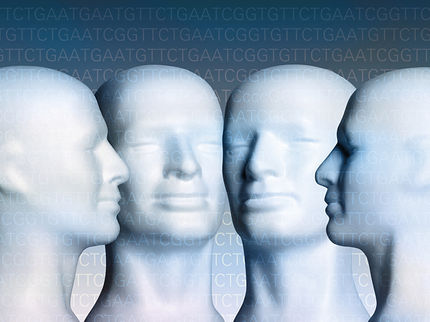Single gene might explain dramatic differences among people with schizophrenia
Some of the dramatic differences seen among patients with schizophrenia may be explained by a single gene that regulates a group of other schizophrenia risk genes. These findings appear in a new imaging-genetics study from the Centre for Addiction and Mental Health (CAMH).
The study revealed that people with schizophrenia who had a particular version of the microRNA-137 gene (or MIR137), tended to develop the illness at a younger age and had distinct brain features – both associated with poorer outcomes – compared to patients who did not have this version. This work, led by Drs. Aristotle Voineskos and James Kennedy, appears in the latest issue of Molecular Psychiatry.
Treating schizophrenia is particularly challenging as the illness can vary from patient to patient. Some individuals stay hospitalized for years, while others respond well to treatment.
"What's exciting about this study is that we could have a legitimate answer as to why some of these differences occur," explained Dr. Voineskos, a clinician-scientist in CAMH's Campbell Family Mental Health Research Institute. "In the future, we might have the capability of using this gene to tell us about prognosis and how a person might respond to treatment."
"Drs. Voineskos and Kennedy's findings are very important as they provide new insights into the genetic bases of this condition that affects thousands of Canadians and their families," said Dr. Anthony Phillips, Scientific Director at the Canadian Institutes of Health Research Institute of Neurosciences, Mental Health and Addiction.
Also, until now, sex has been the strongest predictor of the age at which schizophrenia develops in individuals. Typically, women tend to develop the illness a few years later than men, and experience a milder form of the disease.
"We showed that this gene has a bigger effect on age-at-onset than one's gender has," said Dr. Voineskos, who heads the Kimel Family Translational Imaging-Genetics Research Laboratory at CAMH. "This may be a paradigm shift for the field."
The researchers studied MIR137 — a gene involved in turning on and off other schizophrenia-related genes — in 510 individuals living with schizophrenia. The scientists found that patients with a specific version of the gene tended to develop the illness at a younger age, around 20.8 years of age, compared to 23.4 years of age among those without this version.
"Although three years of difference in age-at-onset may not seem large, those years are important in the final development of brain circuits in the young adult," said Dr. Kennedy, Director of CAMH's Neuroscience Research Department. "This can have major impact on disease outcome."
In a separate part of the study involving 213 people, the researchers used MRI and diffusion tensor-magnetic resonance brain imaging (DT-MRI). They found that individuals who had the particular gene version tended to have unique brain features. These features included a smaller hippocampus, which is a brain structure involved in memory, and larger lateral ventricles, which are fluid-filled structures associated with disease outcome. As well, these patients tended to have more impairment in white matter tracts, which are structures connecting brain regions, and serving as the information highways of the brain.
Developing tests that screen for versions of this gene could be helpful in treating patients earlier and more effectively.
"We're hoping that in the near future we can use this combination of genetics and brain imaging to predict how severe a version of illness someone might have," said Dr. Voineskos. "This would allow us to plan earlier for specific treatments and clinical service delivery and pursue more personalized treatment options right from the start."

























































